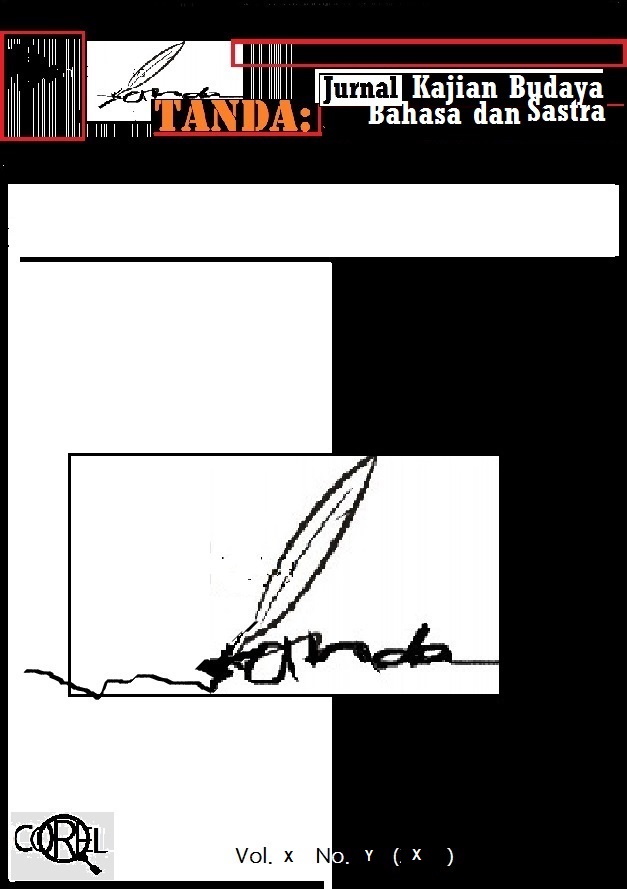ANALISIS FAKTOR-FAKTOR PENYEBAB HIKIKOMORI PADA REMAJA DI JEPANG
DOI:
https://doi.org/10.69957/tanda.v4i06.1664Keywords:
Hikikomori, Jepang, Hitorikko, IjimeAbstract
Fenomena di era modern ini, menunjukkan peningkatan yang signifikan pada masalah remaja dalam menghadapi berbagai permasalahan sosial, termasuk kesulitan dalam berinteraksi dengan lingkungan sekitar yang mengakibatkan mereka mengisolasi diri di dalam kamar mereka. Fenomena ini dikenal dengan istilah "social withdrawal" atau yang lebih dikenal sebagai "hikikomori". Penelitian ini bertujuan untuk memahami faktor-faktor yang menyebabkan fenomena hikikomori pada remaja di Jepang. Metode penelitian yang digunakan adalah deskriptif kualitatif dengan studi pustaka sebagai sumber data. Hasil penelitian menunjukkan bahwa faktor-faktor yang mempengaruhi terjadinya hikikomori meliputi lingkungan sekolah, keluarga, dan lingkungan sosial. Faktor-faktor tersebut termasuk ijime, tookoo kyohi, gogatsu byo, kegagalan dalam ujian, hubungan yang terlalu erat antara orang tua dan anak, konsep amae, anak tunggal/hitorikko, tekanan akademik, perubahan sosial ekonomi, peer pressure, dan stigma sosial. Penelitian ini memberikan pemahaman yang lebih dalam tentang faktor-faktor yang mempengaruhi terjadinya hikikomori pada remaja di Jepang.
References
Correy, Evan. (2012). Hikikomori. Boulder: University of Colorado Boulder.New York Times: Shutting them self in https://www.nytimes.com/2006/01/15/magazine/shutting-themselves-in.html (diakses pada tanggal 12/06/2023)
Hajaroh, Mami. 2013. “Paradigma, pendekatan dan metode penelitian fenomenologi. Universitas Negeri Yogyakarta”. (diakses pada 19 Februari 2014)
Hikikomori, Samakah dengan Ansos atau Agrofobia? https://buletin.k-pin.org/index.php/arsip-artikel/855-hikikomori-samakah-dengan-ansos-atau-agrofobia#:~:text=Penyebab%20Hikikomori&text=Biasanya%20gejala%20berawal%20 dari%20kinerja,menerus%2C%20dan%20lain%2Dlain. (Diakses pada tanggal 12/06/2023)
Iwadate, Y. (2013). Bullying in Japanese Schools: Effective Anti-bullying Programs and Challenges. Procedia - Social and Behavioral Sciences, 106, 2066-2075.
Mengenal Hikikomori, Fenomena 'Mengasingkan Diri' pada Remaja di Jepang https://www.detik.com/edu/detikpedia/d-6713036/mengenal-hikikomori-fenomena-mengasingkan-diri-pada-remaja-di-jepang (diakses pada tanggal 12/06/2023)
Mengenal Hikikomori Dan Penyebabnya https://student-activity.binus.ac.id/himja/2018/12/mengenal-hikikomori-dan-penyebabnya/ (diakses
pada tanggal 12/06/2023)
Kyodo. 2019. ―613,000 in Japan Aged 40 to 64 are Recluses, Says First Government Survey of Hikikomori, Diambil dari https://www.japantimes.co.jp/news/2019/03/29/national/ 613000-japan-aged40-64-recluses-says-first-government-survey-hikikomori/#.XoA579IzbIU (diakses pada tanggal 12/06/2023)
Saito, T. (2010). Relevance of hikikomori syndrome in Japan. Psychological Medicine, 40(2), 295-302.
Tamaki, Saito. (2019). Japan Foreign Policy Forum: The Reality of 1 Million “Middle-aged and Elderly Hikikomori” ― The Aging of Hikikomori is a Major Issue for All of Society. Tokyo: Discuss Japan.
Thomas, D. R., & Nelson, J. (2001). Research methods in physical activity. Champaign, IL: Human Kinetics.
Takamatsu,Yuta. Kato, Kazuo (2001).「甘え」, 「甘える」, 「甘えさせる」とは何か? : 素朴概念の分析を通して. Faculty of Human-Environment Studies, Kyushu University. DOI: //doi.org/10.15017/859
Matsumoto David, 2002 The New Japana Debunking Seven Cultural Intercultural Press London
Japan Times. 2001. “Perverse Individualist Embraces Opportunity Where Others See Gloom.”
March,
Diener, Ed, and Shigehiro Oishi. 2000. “Money and Happiness:Income and Subjective Well-Being across Nations.” In Culture and Subjective Well-Being, edited by Ed Diener and Shigehiro Oishi, 185–218. Cambridge, MA: MIT Press.
Dinnel, Dale. 2001. “Culture and Self: A Reconceptualization of the Role of Individualism and Collectivism.” Paper presented at a conference in Bath, NSW, Australia
Ishihara, Shintaro. 1989. The Japan that Can Say No. New York: Simon and Schuster
Downloads
Published
How to Cite
Issue
Section
License
Copyright (c) 2024 Zida Wahyuddin; Cuk Yuana; M. Rizki Kurniawan

This work is licensed under a Creative Commons Attribution-ShareAlike 4.0 International License.
Authors publishing in TANDA: Jurnal Kajian Budaya, Bahasa dan Sastra e-ISSN 2797-0477 will be asked to sign a Copyright Determination Form. In signing the form, it is assumed that the author has obtained permission to use copyrighted or previously published material. All authors must read and agree to the terms outlined in the form, and must sign the form or agree that the corresponding author can sign on their behalf. The article cannot be published until the signed form has been received. It is a condition of publication that authors grant copyright or license the publication rights in their article, including the abstract, to jurnaltanda@gmail.com. This allows us to ensure full copyright protection and to disseminate the article, and of course the Journal to the widest possible readership in both print and electronic formats.













